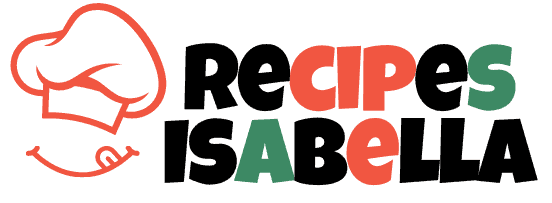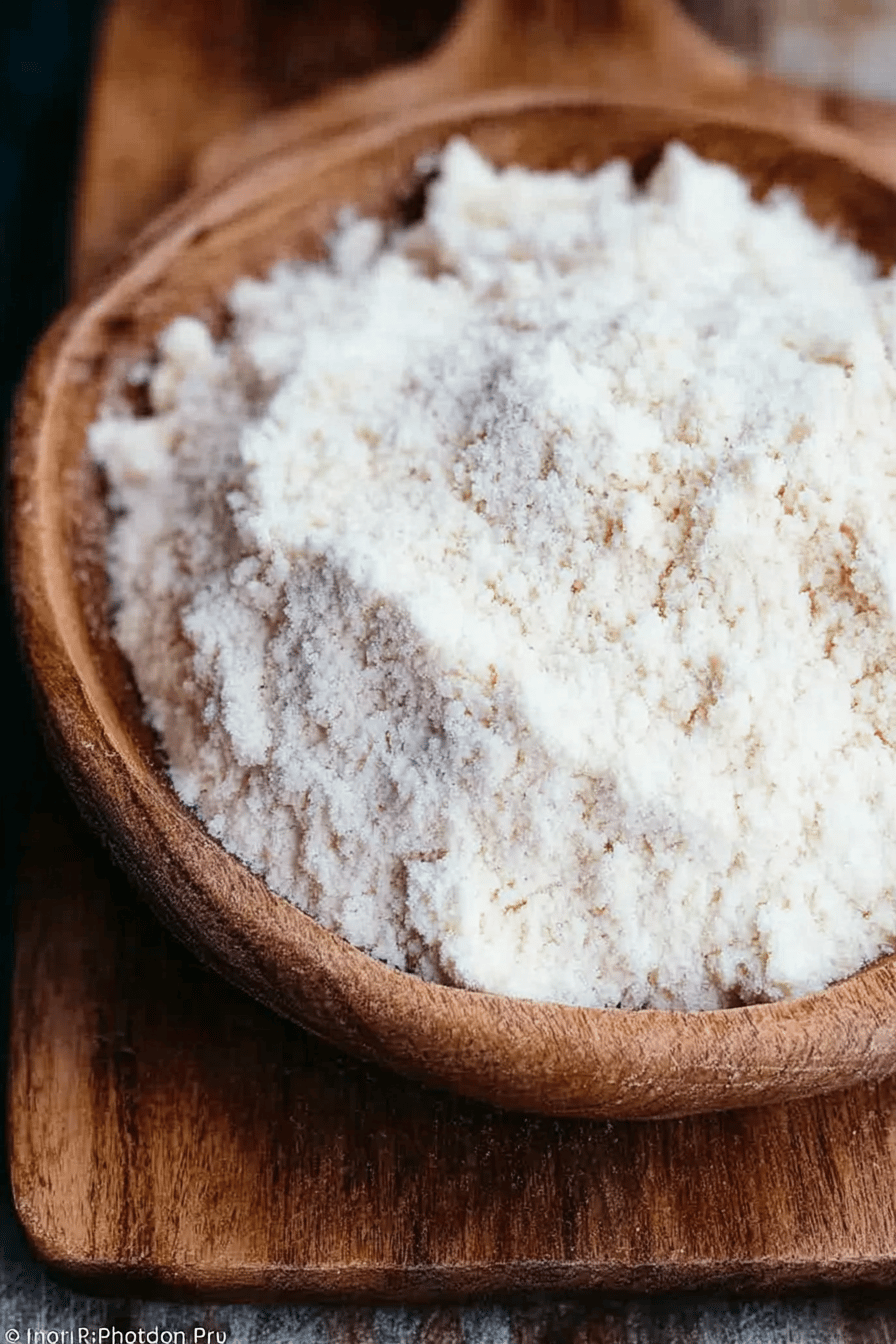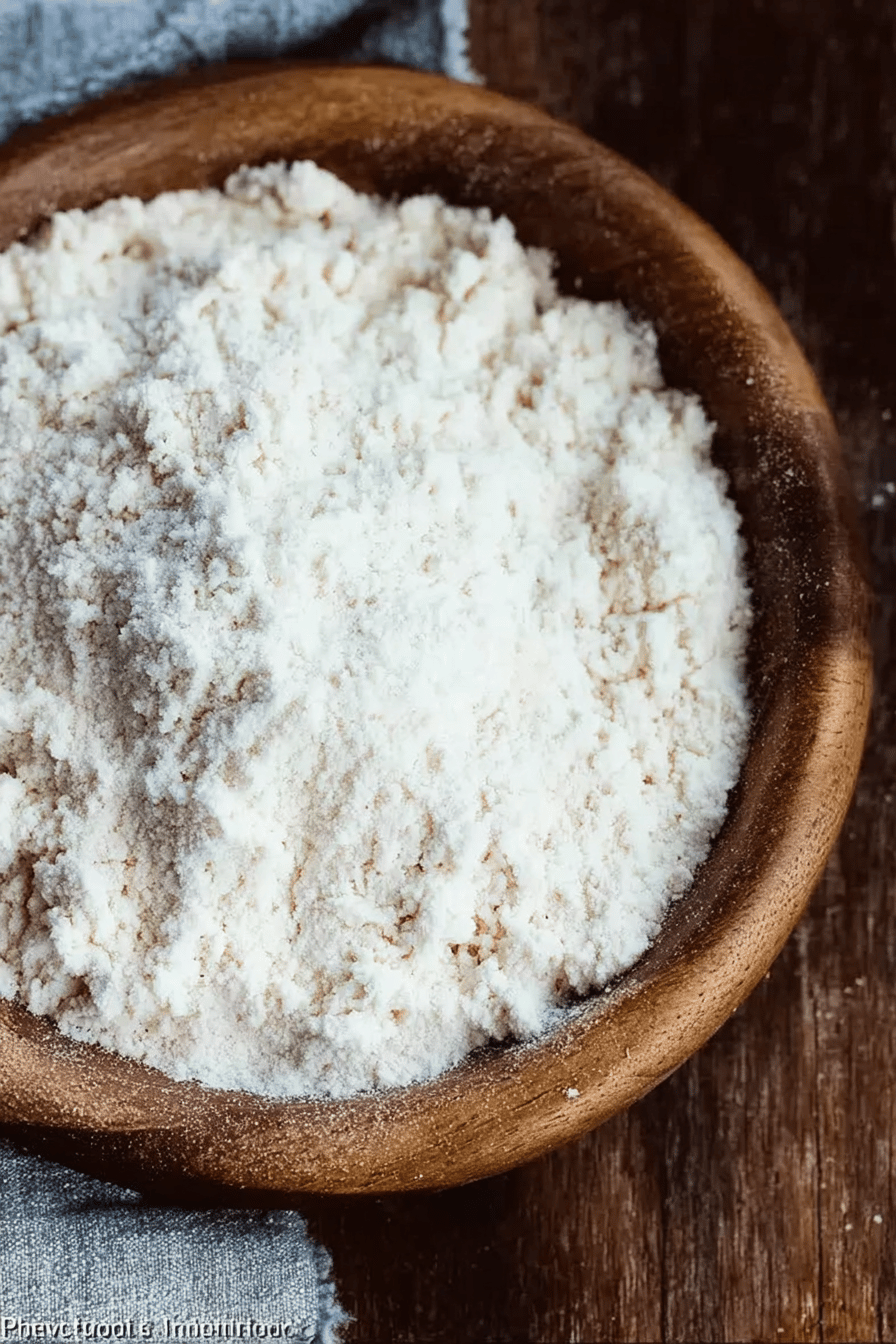Why You’ll Love This Flour Basics
As a home baker, understanding flour basics can make your time in the kitchen more enjoyable and rewarding. It’s straightforward for busy parents and students because it helps you pick the right flour without overcomplicating things. Plus, these basics let you create recipes that fit various lifestyles, from diet-conscious meals to quick treats for family gatherings.
One reason you’ll appreciate flour basics is the ease of preparation. Recipes using these flours come together quickly, perfect for working professionals who need nutritious options without much fuss. They also bring health benefits through ingredients like whole wheat flour, which keeps the wheat germ for extra oils and nutrients that support overall wellness.
Another plus is the versatility of these flours, allowing you to tweak recipes for different needs, such as vegan or gluten-free versions. For instance, baking with whole wheat pastry flour adds a nutty flavor while keeping things light and adaptable. Whether you’re a baking enthusiast or a senior exploring new hobbies, these flour types enhance your dishes and make everyday cooking fun and accessible. To dive deeper into healthy choices, check out this guide on benefits of whole grains.
The flours discussed, like bread flour and all-purpose flour, vary in texture and protein content, which directly impacts the final product. For example, in no-knead bread recipes, you mix 3 cups (about 360 grams) of flour with 1 ½ teaspoons salt, 1/4 teaspoon yeast, and 1 ½ cups (360 ml) water for a simple, hands-off approach. This makes flour basics ideal for food enthusiasts who love experimenting without advanced skills.
Jump To
- 1. Why You’ll Love This Flour Basics
- 2. Essential Ingredients for Flour Basics
- 3. How to Prepare the Perfect Flour Basics: Step-by-Step Guide
- 4. Dietary Substitutions to Customize Your Flour Basics
- 5. Mastering Flour Basics: Advanced Tips and Variations
- 6. How to Store Flour Basics: Best Practices
- 7. FAQs: Frequently Asked Questions About Flour Basics
- 8. Flour Basics
Essential Ingredients for Flour Basics
Getting the ingredients right is key to mastering flour basics, and I’ll walk you through them step by step. The main flours we cover include whole wheat flour, whole wheat pastry flour, bread flour, all-purpose flour, pastry flour, cake flour, and self-rising flour. Each one plays a unique role based on its protein content and texture, affecting how your baked goods turn out.
When cake flour isn’t on hand, you can swap it with a mix that includes cornstarch to keep your recipes light and tender. Now, let’s look at the specific ingredients for a basic recipe, pulling from what works well in everyday baking.
Main Ingredients
- 2 cups all-purpose flour – Provides structure and texture for a wide range of recipes.
- 1 tsp baking powder – Leavens the batter for fluffiness in quick breads and cakes.
- 1/2 tsp salt – Enhances flavor and balances the overall taste.
- 1 cup water – Binds ingredients together to create a smooth mixture.
- 2 tbsp olive oil – Adds moisture and richness to the final product.
- 3 cups (approximately 360 grams) flour (for no-knead bread) – Forms the base, such as bread flour for a hearty loaf.
- 1 ½ teaspoons salt (for no-knead bread) – Seasons the dough properly.
- 1/4 teaspoon yeast (for no-knead bread) – Helps the bread rise with minimal effort.
- 1 ½ cups (360 ml) water (for no-knead bread) – Hydrates the dough for that perfect texture.
This list covers everything you need, making it easy to follow along. Whole wheat flour, for example, retains the wheat germ for added nutrients, while self-rising flour includes baking powder already mixed in.
Special Dietary Options
Adapting these ingredients for different diets is simple and helps everyone enjoy the recipes. For a vegan twist, use plant-based milk like almond milk instead of water and swap olive oil with coconut oil. If you’re going gluten-free, replace all-purpose flour with a gluten-free blend to keep the texture just right.
For low-calorie versions, choose low-fat oil substitutes and cut back on the oil amount. These changes ensure that whole wheat pastry flour or cake flour substitutions fit your needs without losing flavor. For more on flour types and their uses, visit this helpful resource, which explains how each flour impacts baking.
How to Prepare the Perfect Flour Basics: Step-by-Step Guide
Preparing flour basics starts with gathering your ingredients, which sets you up for success. Measure everything accurately to match the protein content of your chosen flour, like using bread flour for a stronger structure. This step makes it easy for beginners, such as newlyweds setting up their first kitchen.
First Step: Gather and Measure
Start by collecting all items from the ingredients list and measure them precisely. For no-knead bread, that means 3 cups of flour, 1 ½ teaspoons salt, 1/4 teaspoon yeast, and 1 ½ cups water. This preparation helps you adapt to flours like whole wheat, which adds nutrients from the wheat germ.
Second Step: Mix the Dry Ingredients
In a large bowl, sift the flour and baking powder to aerate the mixture. If you’re using cake flour, remember it might need cornstarch as a substitute for the right texture. Stir gently to avoid compacting, especially with high-protein flours like bread flour.
Third Through Sixth Steps
Add salt and mix evenly, then pour in water and oil while stirring to form a smooth batter. For variations, adjust for dietary needs as you go. Heat your pan and cook the batter, flipping as needed. For a related recipe that uses similar techniques, try this cheesy quick bread recipe on our site.
This guide works for travelers or seniors who want simple meals. The protein content in your flour will influence the outcome, so choose wisely for the best results.
Dietary Substitutions to Customize Your Flour Basics
Customizing flour basics lets you tailor recipes to your lifestyle, and it’s easier than you think. With flours like whole wheat or cake flour, you can make adjustments based on texture and protein needs.
Protein and Main Component Alternatives
- Substitute with plant-based options like tofu for vegan diets.
- Use chickpea flour or almond flour for gluten-free bases.
Vegetable, Sauce, and Seasoning Modifications
- Swap vegetables with seasonal picks like zucchini.
- Introduce sauces such as tahini for added flavor.
- Adjust seasonings to fit your spice tolerance.
Remember, substituting cake flour might require cornstarch, and whole wheat flour adds fiber, impacting the final texture.
Mastering Flour Basics: Advanced Tips and Variations
Once you’re comfortable with the basics, try some advanced tips to elevate your baking. Focus on precise temperature control when working with flours like bread flour, which has high protein for better rise. Experimenting with flavors, such as adding herbs, can make your recipes stand out.
- Use exact timing for optimal texture in no-knead bread recipes.
- Add spices like cumin to create unique tastes with whole wheat flour.
- Garnish your bakes for a polished look think fresh herbs.
- Prepare batter ahead and store it for convenience.
For another idea, check out our blueberry cottage cheese breakfast bake, which uses similar flour techniques. These tips help baking enthusiasts get creative while considering protein content and substitutions.
How to Store Flour Basics: Best Practices
Proper storage keeps your flour fresh and ready for use, especially for types like whole wheat flour that contain oils from the wheat germ. Keep everything in a cool, dry spot to maintain quality for your next recipe. Here’s a quick table to guide you:
| Method | Details | Duration |
|---|---|---|
| Refrigeration | Store in an airtight container | 2-3 days |
| Freezing | Wrap tightly for preservation | Up to 1 month |
| Reheating | Warm in a skillet or microwave | N/A |
These practices work well for all flours, ensuring they stay nutritious and effective in recipes like no-knead bread.
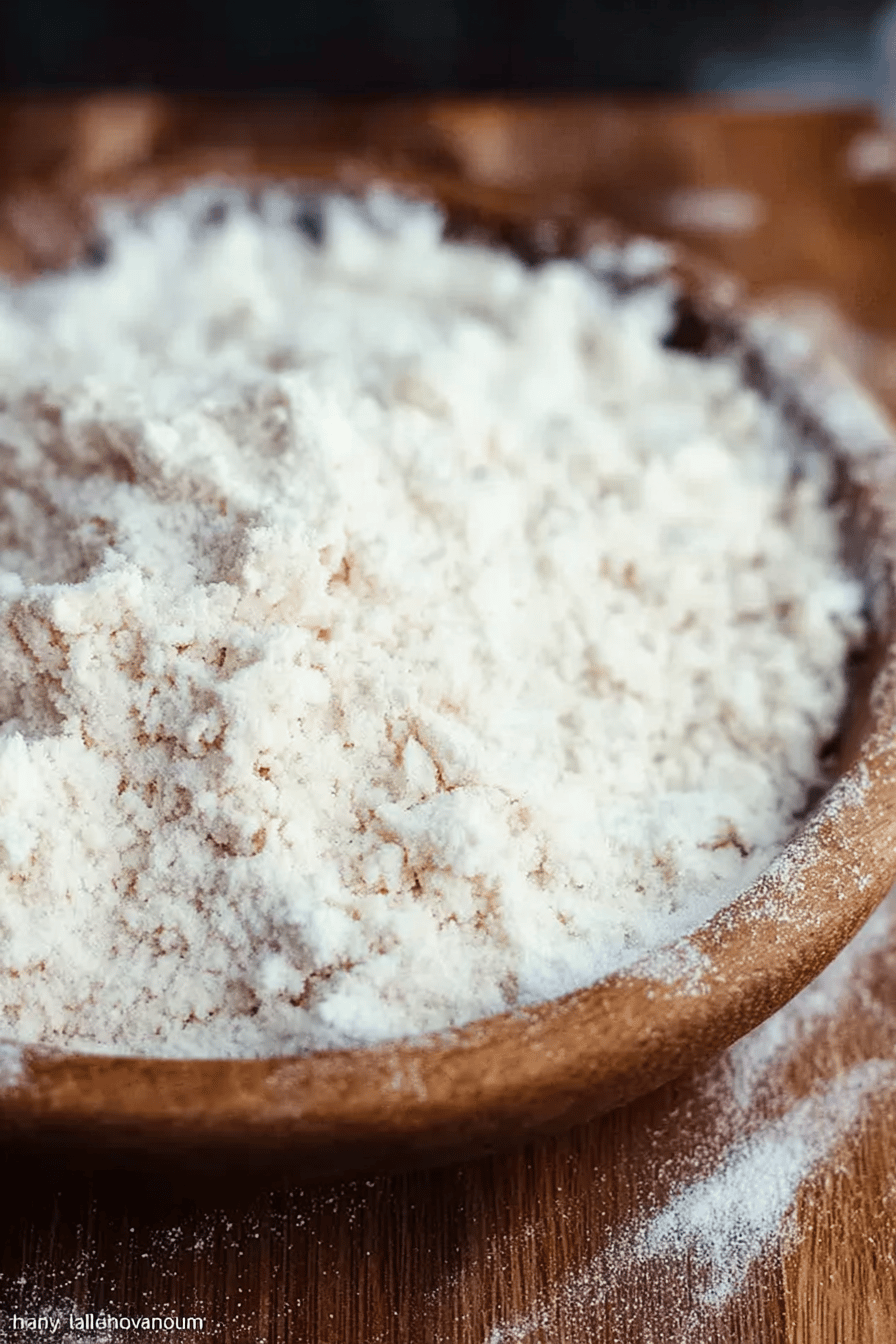
FAQs: Frequently Asked Questions About Flour Basics
What are the main types of flour used in baking?
The most common types of flour used in baking include all-purpose flour, bread flour, cake flour, and whole wheat flour. All-purpose flour is versatile with medium protein content, suitable for many recipes. Bread flour has higher protein for stronger gluten, ideal for yeast breads. Cake flour is finely milled with lower protein, resulting in tender cakes. Whole wheat flour contains the entire grain, adding fiber and a nutty flavor. Choosing the right flour affects texture and rise in baked goods.
How does flour protein content affect baking results?
Flour protein content influences gluten development, which impacts texture and structure. Higher protein flours, like bread flour (12-14%), create more gluten, giving bread a chewy texture and good rise. Lower protein flours, such as cake flour (6-8%), produce less gluten, making baked goods softer and more tender. Understanding protein percentages helps select flour that matches your recipe’s desired outcome, whether chewy bread or delicate pastries.
Can I substitute one type of flour for another in a recipe?
Substituting flour types can work but may change your recipe’s texture and taste. For example, replacing all-purpose flour with whole wheat flour will yield denser, nuttier results due to higher fiber. Using cake flour instead of all-purpose creates softer baked goods but may not support heavier doughs well. When substituting, consider adjusting liquid amounts or blending flours to maintain the desired consistency.
How should I store flour to keep it fresh?
Flour should be stored in an airtight container in a cool, dry place to prevent moisture and pests. For short-term storage, a pantry or cupboard works well. For longer storage, especially whole wheat or nutty flours that spoil faster, refrigerate or freeze in sealed containers to maintain freshness and prevent rancidity. Proper storage can extend shelf life from several months to up to a year.
What is the difference between bleached and unbleached flour?
Bleached flour undergoes chemical treatment to whiten it and soften the texture, which is preferred for cakes and cookies requiring tender crumb. Unbleached flour ages naturally and has a denser, slightly off-white color, offering a stronger gluten structure suitable for bread and pastries. Both types have similar protein content, but the choice depends on the baking results you want to achieve.
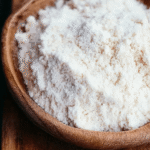
Flour Basics
- Total Time: 12-18 hours 5 minutes
- Diet: Gluten-containing
Description
🌾 Understanding the basics of flour types helps you choose the right one for perfect baking results each time.
🍞 Learning about protein content and uses ensures your breads, pastries, and cakes turn out with the desired texture and flavor.
Ingredients
– 2 cups all-purpose flour Provides structure and texture for a wide range of recipes.
– 1 tsp baking powder Leavens the batter for fluffiness in quick breads and cakes.
– 1/2 tsp salt Enhances flavor and balances the overall taste.
– 1 cup water Binds ingredients together to create a smooth mixture.
– 2 tbsp olive oil Adds moisture and richness to the final product.
– 3 cups (approximately 360 grams) flour (for no-knead bread) Forms the base, such as bread flour for a hearty loaf.
– 1 ½ teaspoons salt (for no-knead bread) Seasons the dough properly.
– 1/4 teaspoon yeast (for no-knead bread) Helps the bread rise with minimal effort.
– 1 ½ cups (360 ml) water (for no-knead bread) Hydrates the dough for that perfect texture.
Instructions
1-First Step: Gather and Measure: Start by collecting all items from the ingredients list and measure them precisely. For no-knead bread, that means 3 cups of flour, 1 ½ teaspoons salt, 1/4 teaspoon yeast, and 1 ½ cups water. This preparation helps you adapt to flours like whole wheat, which adds nutrients from the wheat germ.
2-Second Step: Mix the Dry Ingredients: In a large bowl, sift the flour and baking powder to aerate the mixture. If you’re using cake flour, remember it might need cornstarch as a substitute for the right texture. Stir gently to avoid compacting, especially with high-protein flours like bread flour.
3-Third Through Sixth Steps: Add salt and mix evenly, then pour in water and oil while stirring to form a smooth batter. For variations, adjust for dietary needs as you go. Heat your pan and cook the batter, flipping as needed. For a related recipe that uses similar techniques, try this cheesy quick bread recipe on our site.
Notes
🌾 Choose flour by protein content to match your baking needs.
🥖 Reserve whole wheat flour for nutrient-rich breads with denser crumb.
🌸 Use cake flour or cornstarch blends for delicate baked goods like cakes.
- Prep Time: 5 minutes
- Resting time for no-knead bread: 12-18 hours
- Category: Baking Basics
- Method: Mixing and resting
- Cuisine: Universal
Keywords: Flour, Baking, Types, Uses
